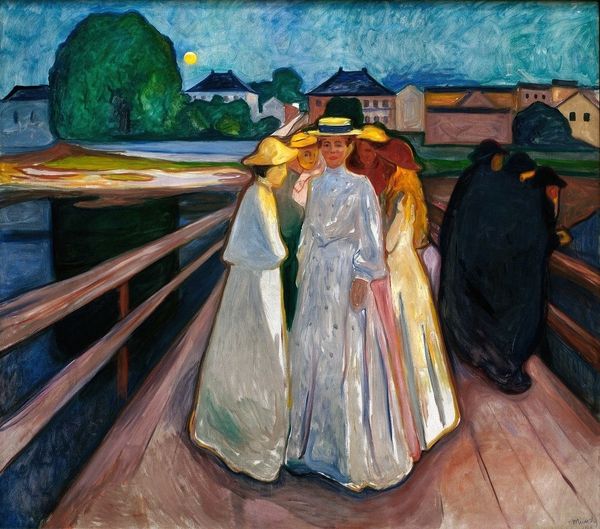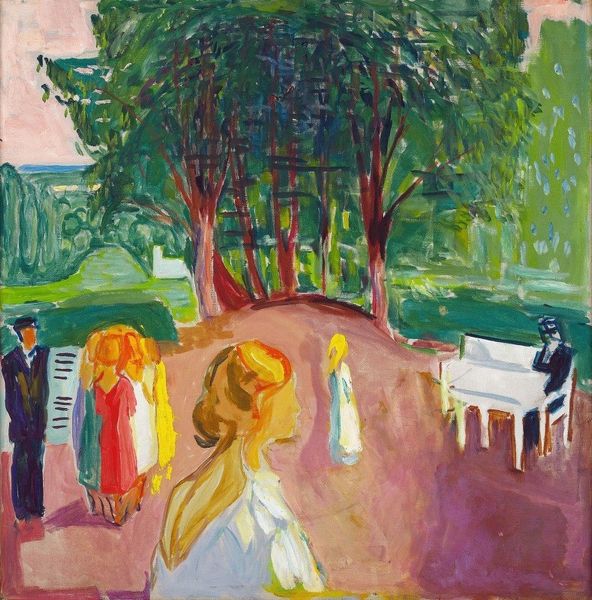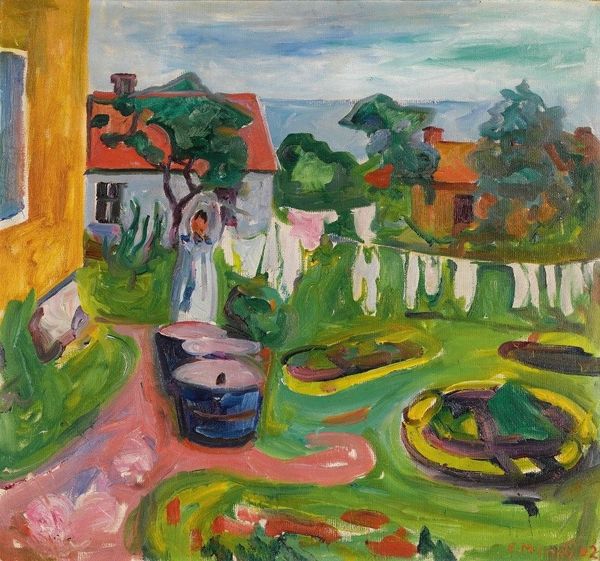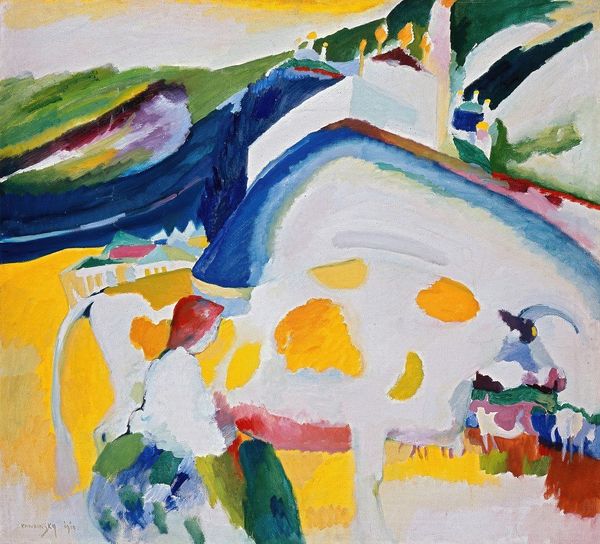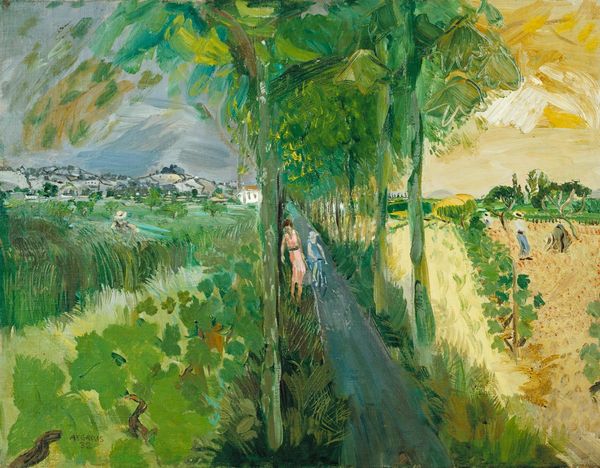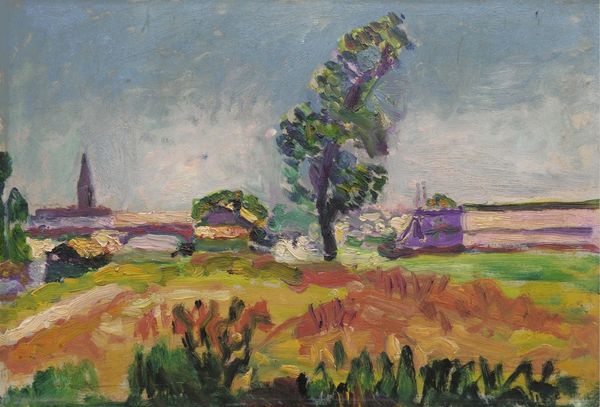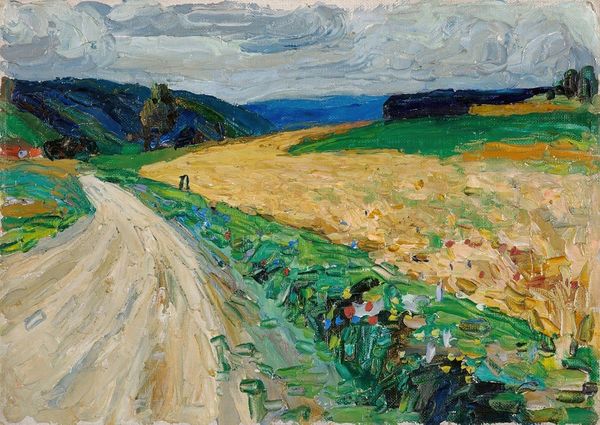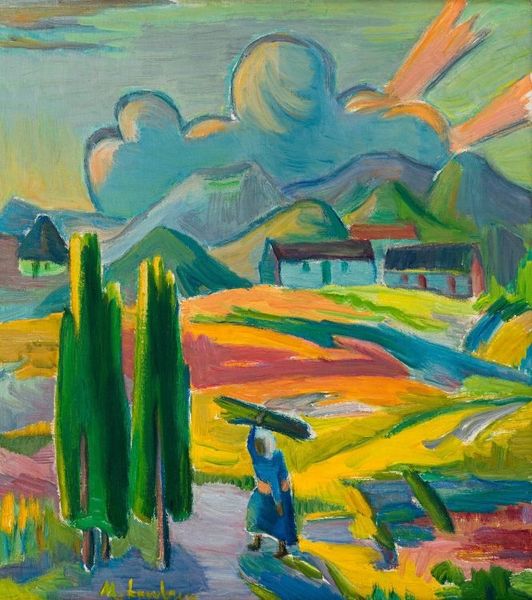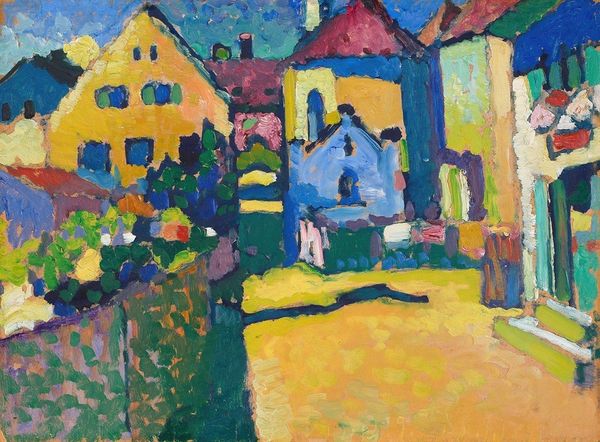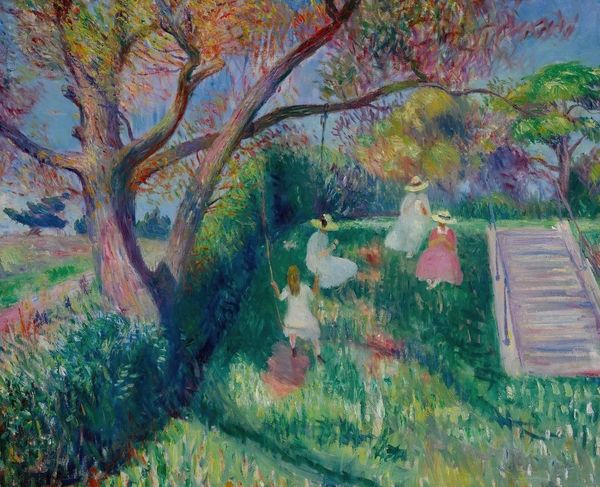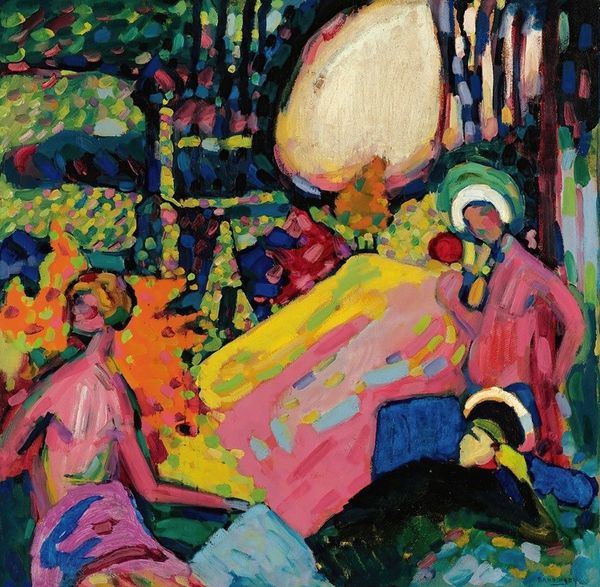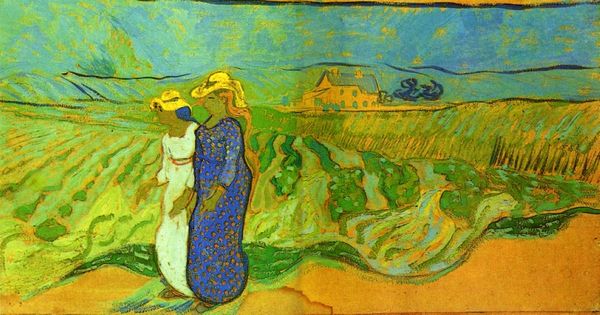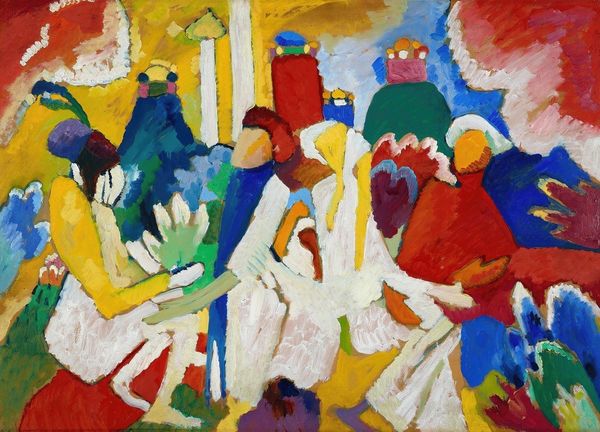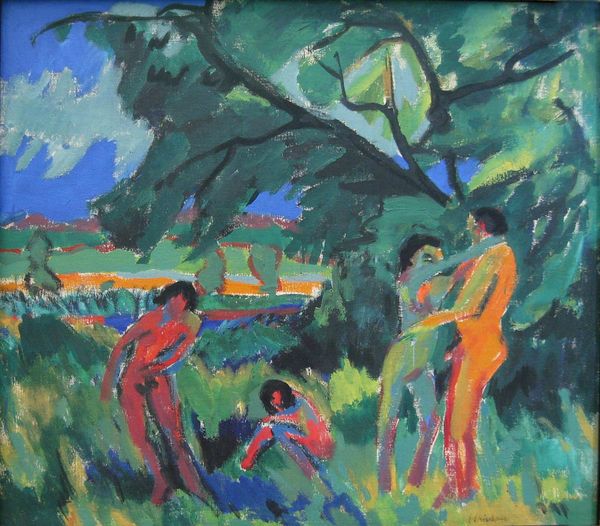
Copyright: Public Domain: Artvee
Curator: Edvard Munch's "The Women on the Bridge," estimated to be from 1934 to 1940. Quite different from his famous scream. Editor: It feels, surprisingly, serene. Muted, almost faded tones, but also vibrant at the same time, especially with those yellow hats! And the scene… it's a little unsettling, isn't it? Curator: Unsettling? In what way? The landscape, the women in their almost ethereal dresses... it seems like a snapshot of a summer day, yet with a slight sense of isolation that reminds me of many group settings. Editor: It's the men at either ends of the bridge! They seem so disconnected from the central figures. Who are these women, really? I find myself thinking about the restricted roles available to women in Norway at that time, between the wars, the struggle for social equality. The women cluster together almost defensively... against what, though? Curator: Defensively, yes perhaps, I agree... It is interesting you say "who are these women," because aren't we all like these women at some stage in our lives. But really, Munch returns often to female groups; they can carry every feeling and perspective, perhaps he is actually thinking who are these "men?" It might also be interesting to think how much he liked the repetition in Japanese woodblock prints for this composition. Editor: It's interesting you make that connection to prints! Those hard, dark lines creating a sense of foreboding… it is evocative! There's this palpable tension, and this strange blend of camaraderie and distance all coexisting. Almost like the way history books omit the everyday experiences of women and gender minorities, the background for their exclusion becoming obscured through a narrative focussed on men only. Curator: Exactly! Almost like in some photographs you get, when somebody moves and ends up blurred on what otherwise seemed like a static image. They were there! Now I can see that element you are saying, this does resonate with ideas of lost voices and unwritten futures. Editor: This is precisely what compels me about it—the social and the emotional made so palpably visible through layers of texture, color, composition. Now I am going to remember "The Women on the Bridge" forever. Curator: Yes! It gives the ordinary some charge and power to reveal. What a treasure, always!
Comments
No comments
Be the first to comment and join the conversation on the ultimate creative platform.
